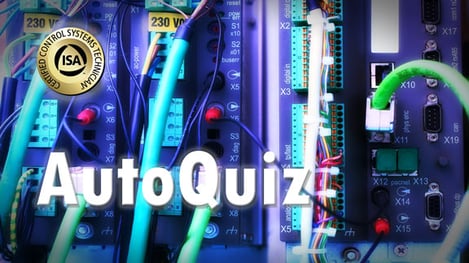AutoQuiz is edited by Joel Don, ISA's social media community manager.
Today's automation industry quiz question comes from the ISA Certified Control Systems Technician (CCST) program. Certified Control System Technicians calibrate, document, troubleshoot, and repair/replace instrumentation for systems that measure and control level, temperature, pressure, flow, and other process variables. Click this link for information about the CCST program. This question is from the Level III study guide, Domain 2, Loop checking. Level III represents a professional who has a 13-year total of education, training, or experience.
variables. Click this link for information about the CCST program. This question is from the Level III study guide, Domain 2, Loop checking. Level III represents a professional who has a 13-year total of education, training, or experience.
Which is the best response in reference to programmable logic controllers?
a) use sequential logic control
b) perform PID control with the same capability as DCS
c) have limitations in flexibility of control strategies
d) are programmed using flow charts and P & IDs
e) none of the above
We use ladder logic to program programmable logic controllers (PLCs), where a series of complex logic checks are required before something is turned on. Ladder logic is useful for simple but critical control systems or for reworking old hardwired relay circuits. As PLCs became more sophisticated, it has also been used in very complex automation systems.
Ladder logic (sequential logic) is a rule-based language rather than a procedural language. A "rung" in the ladder represents a rule. When implemented with relays and other electromechanical devices, the various rules "execute" simultaneously and immediately.
The rules are typically executed sequentially by software in a loop. The best answer is A.




